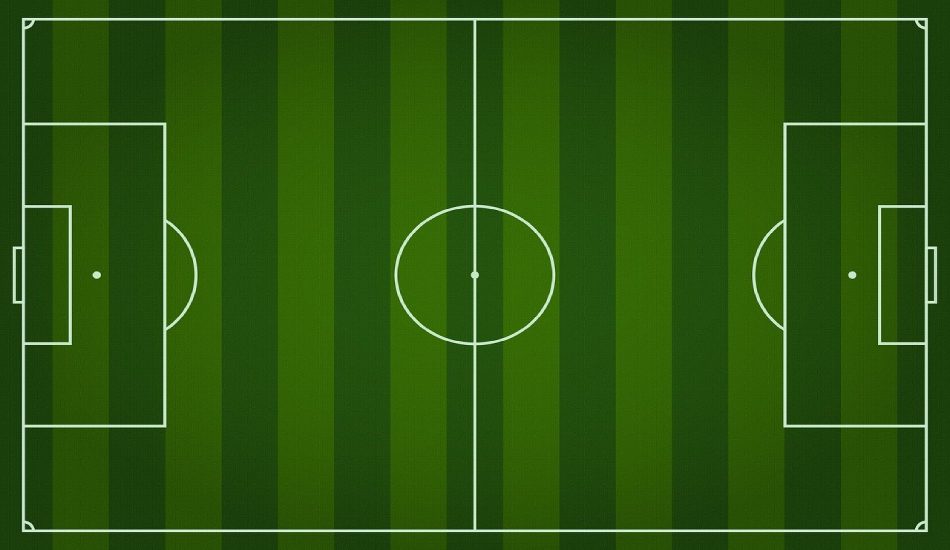Table of Contents
If you are a football fanatic, then you must have wondered what the soccer field dimensions are. Or, if you are stepping into the field of football as a newbie, then it’s of the utmost importance to know about the soccer field dimensions.
The “International Football Association Board (IFAB)”, the international governing board of the soccer game, makes the rules. It has kept the social field dimensions rectangular, which makes the game fun and easy for the players.
In fact, the players can come up with their own strategies and ideas after knowing the social field’s length and size. Without knowing these basics, it’s impossible to play the game. This blog highlights the complete details of the soccer field dimensions.
What is the length of a soccer field?
According to the international football board that writes the rules for soccer, it suggests keeping the pitch rectangular and marked with consistent lines.
Moreover, the length of the soccer field has to be 91 to 120 meters (100–130 yards) depending on the level of play and the league.
Talking about the width, it stays between 40-90 meters (50-100 yards) wide in general.
| Yards | Meters | |
| Maximum Length | 130 | 120 |
| Maximum Width | 100 | 90 |
| Minimum Length | 100 | 90 |
| Minimum Width | 50 | 40 |
Bundesliga Soccer Field Dimensions
In the Bundesliga league, article 37, section 6 of Annex VI DFL rules says to keep the soccer field dimensions 105 meters (115 yards) long and 68 meters (74 yards) wide. Additionally, there is an allowance to not bring these numbers below 100m (110 yards) and 64m (70 yards) respectively.
Soccer field dimensions for international matches
Soccer field dimensions for international matches are highly strict. This is to make it easier to bring the teams to the same soccer field size while competing with each other.
In the case of international matches, soccer field sizes are reduced to 100-110 meters (110-120 yards), with a width of 64-75 meters (70-80 yards).
Here, the experts measure field dimensions starting outside of the lines. This is because the lines are part of the area around them. In addition, the touchline side should be bigger than the target lines.
Soccer field dimensions for middle and high schools
At the middle and high levels, the dimensions of the soccer field are classified according to the player’s age. This is because they don’t have the strength of adults. With the reduced dimensions, it becomes convenient to play, score, and succeed. Go through the points below to know the high school soccer dimensions as well as the middle school dimensions.
- 15 to 20 yards x 25 to 30 yards for children aged 6 and below.
- 20 to 25 yards, up to 30 yards for children aged 8 and below.
- For children aged 10 and under, the distances are 40 to 50 yards x 60 to 70 yards.
- 40 to 55 yards x 90 to 100 yards for kids 12 and under.
- 70 to 80 yards, 110 to 130 yards for children aged 14 and above.
The rules of high school soccer are set by the NFHS (National Federation of State High School Associations (NFHS).
Soccer Field Dimensions of Other Areas
Apart from the above soccer field dimensions, there are some other areas on the field that you have to know about too. They are soccer field boundaries that refer to the boundaries/whitelines on the field. These lines help players as well as the referee on the field with the identification of separate areas.
1) A soccer field’s midfield mark
It’s the center of the field and the midpoint of the halfway line, containing the circle with a radius of approximately 10 yards. At the start, beginning of the half, and restarting after the goal has been scored, the opponent has to be outside of the circle unless the ball isn’t kicked.
2) Lines in a soccer field
There are three kinds of lines, including touchlines, endlines, and halfway lines. Their width must be uniform, and their length should not exceed 12 cm.
- The touchline defines the boundary of the field.
- Endline: defines the width of the field and is placed at the area’s end.
- The halfway line helps in the division of the field into two areas.
3) The goal post area in a soccer field
The smaller of the two rectangular boxes surrounding the goal is called the goal area. Goal Post size is determined by drawing two lines perpendicular to the goal line.
Sometimes, it is also known as a “6-yard box” because these lines reach about 6 yards from the field of play.
4) The flag hole of the soccer field
Do you know about the importance of flags at home on the soccer field? In soccer, a corner flag must be kept at each quarter of the circle and must be at least 5 feet high. It has to be non-pointed to avoid hurting the players.
5) Penalty Area
A penalty area is a rectangular area present in front of the goal post.
What things must you know after the soccer field dimensions?
If you want to be a classy soccer player, you must not ignore the information we have provided here. For every soccer player, knowing the dimensions of the soccer field is the beginning. The real challenge is to continue playing and practicing moves. And then comes the knowledge of all the rules set by the governing body.
The variation in the field sizes provides an advantage to the soccer clubs when playing in their home stadiums. This way, through field size adjustments, they even get a chance to challenge their opponent. Also, many soccer clubs lack enough funds to maintain or build large and standard soccer stadiums.
